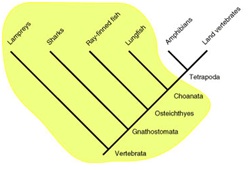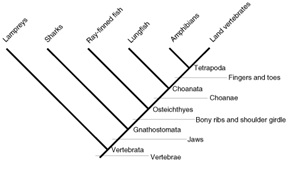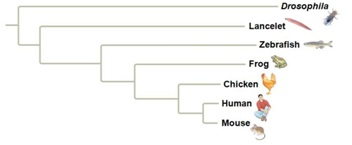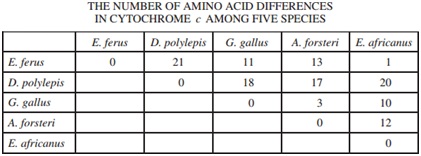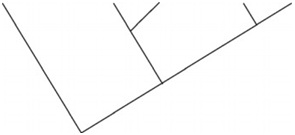Phylogeny Review Worksheet – Phylogenic Tree Question Query
Are you a student who needs assistance on Phylogeny Review Worksheet Question and Answer Assessment? I would strongly recommend you to visit Assignment Help AUS. Here our experts continuously work hard to give you the unique Online Assignment Writing Help. We hire only professional writers with years of experience.
Assessment Details:-
- Topic : Phylogenic Tree
- Pages/Words : 6Pages/1500 Words
- Deadline : As Per Required
AP Biology – Phylogeny Review Worksheet
Tree 1
- Identify at least five characters possessed by birds:
- Identify two characters possessed by reptiles/birds (the group comprised of turtles, lizards, snakes + crocodiles + dinosaurs + birds; including their common ancestors):
- Identify four characters possessed by mammals:
- A clade is a group of species each of which includes an ancestral species and all of its This is also known as a monophyletic group.
True or False: On their own, turtles, lizards, snakes, crocodiles, and dinosaurs form a clade. True or False: On their own, crocodiles, dinosaurs, and birds form a clade.
- According to the cladogram, which character evolved first: the amniote egg or hair?
- According to the cladogram, which character evolved first: keratinized skin or bipedalism?
- On the cladogram, circle the node that represents the most recent common ancestor of crocodiles, dinosaurs and birds.
Tree 2
- What animal does not have jaws?
- Which animals have lungs?
- Which of the following groups do NOT form a clade?
- Pigeon, Mouse, and Chimp
- Lizard, Pigeon, and Mouse
- Salamander, Lizard, Pigeon, Mouse, and Chimp
- Hagfish, Perch, Salamander, Lizard, Pigeon, Mouse, and Chimp
- On the cladogram, circle the node that represents the most recent common ancestor of the pigeon, mouse and chimp.
More Practice With Trees
1. Which node represents the most recent common ancestor of terminal taxa B and C?
2. Which node represents the most recent common ancestor of terminal taxa A and B?
3. Which terminal taxon is B more closely related to, A or C? Explain how you know.
4. Of the cladograms shown below, which one shows a different evolutionary history from the others? (Think “node rotation” or “swap”)
5. Three taxonomic groups are circled on the cladogram Indicated what type of group they represent using the following terms: monophyletic, polyphyletic, and paraphyletic.
6. A simple cladogram of vertebrate relationships is shown below. A circle has been drawn around all of the parts of the cladogram that traditionally would be known as “fish”. What type of group is “fish”? (monophyletic, polyphyletic, or paraphyletic)
7. What is the smallest monophyletic group on the cladogram that includes everything that we might refer to as a fish?
The cladogram of vertebrata is shown below with shared derived characters indicated.
8. Of what monophyletic group is “choanae” a shared derived character?
9. What shared derived character is indicated for Tetrapoda?
10. Name any character on the cladogram that is a shared ancestral character for
11. According to the principle of maximum parsimony, we should first investigate the simplest explanation that is consistent with the Among phylogenies, the most parsimonious tree is one that requires the fewest evolutionary changes. Which of the following trees is most parsimonious?
12. If you were to build a phylogenetic tree of cats, which of the following would be the best outgroup? Explain
- lion
- domestic cat
- wolf
- leopard
13. You are a specialist in taxonomy about to perform a phylogenetic analysis on a group of imaginary beetles. Assume that you have prior knowledge that taxon A is more distantly related to the others than any of the others are to one another. This means that taxon A would be a good choice for an outgroup.
A. Score the following Give all characters a state of “0” for ancestral (same as the outgroup) and “1” for derived (different from outgroup).
| Character | A | B | C | D |
| Large jaws present | ||||
| Small antennae present | ||||
| Spots present | ||||
| Green strips present |
B. Draw a cladogram showing the relationship of these Make sure it is the simplest tree, invoking the fewest possible character state changes.
14. Using the cladogram below, the relative lengths of the frog and mouse branches in the phylogenetic tree indicate that
- Frogs evolved before mice
- Mice evolved before frogs.
- The genes of frogs and mice have only coincidental homoplasies.
- The homolog has evolved more slowly in mice.
15. The amino acid sequence of cytochrome c was determined for five different species of The table below shows the number of differences in the sequences between each pair of species.
A. Using the data in the table, create a phylogenetic tree on the template provided to reflect the evolutionary relationships of the organisms. Provide reasoning for the placement on the tree of the species that is least related to the others.
B. Identify whether morphological data or amino acid sequence data are more likely to accurately represent the true evolutionary relationships among the species, and provide reasoning for your answer.







